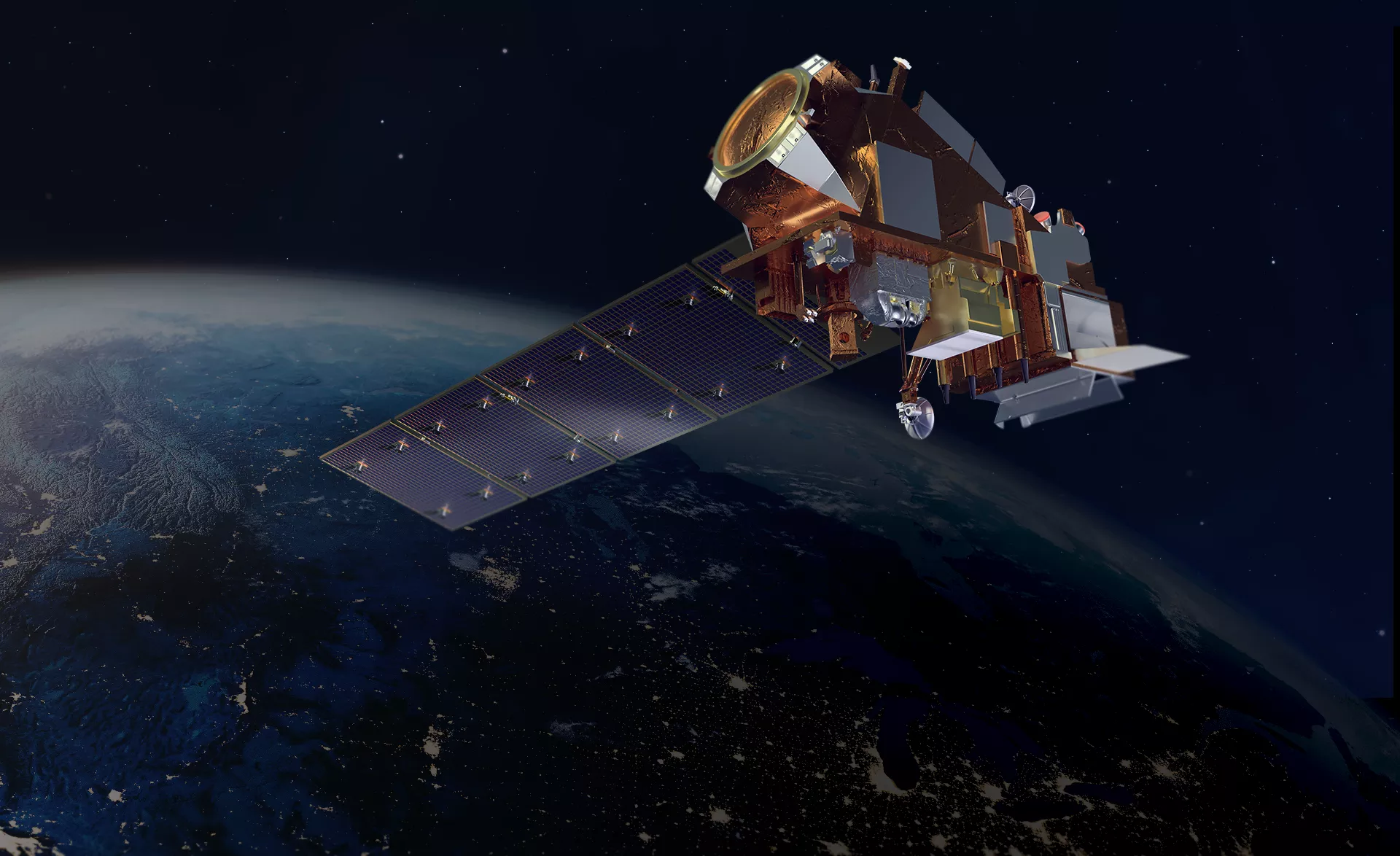
An artist's rendering of the JPSS-2 satellite, which will be renamed NOAA-21 once in orbit.
NOAA and NASA are now targeting November 1, 2022 as the new launch date for NOAA’s Joint Polar Satellite System-2 (JPSS-2) mission. The launch was originally scheduled for September 30, 2022, however, the Visible Infrared Imaging Radiometer Suite instrument, or VIIRS, experienced a test equipment anomaly during thermal vacuum (TVAC) testing.
Engineers determined the anomaly resulted from the movement of test equipment caused by temperature fluctuations during TVAC. Modifications were made to the test set up, and the system has since been retested, with expected performance. The investigation and test equipment modifications resulted in approximately a one-month delay for the completion of the thermal vacuum test.
JPSS-2, the third satellite in the Joint Polar Satellite System series, is scheduled to lift off from the Vandenberg Space Force Base in California. The satellite, to be renamed NOAA-21 upon successfully reaching orbit, will continue the work of its predecessors NOAA-20 (formerly JPSS-1) and the NOAA-NASA Suomi National Polar-orbiting Partnership (Suomi-NPP).
JPSS-2 will scan the globe as it orbits from pole to pole 14 times a day. From 512 miles above Earth, it will capture data that inform weather forecasts, extreme weather events, and climate change.
NOAA oversees the development, launch, and testing of all the satellites in the JPSS program. NOAA funds and manages the program, satellite operations, data product creation and dissemination. On behalf of NOAA, NASA develops and builds the instruments, spacecraft, and launches the satellites, which NOAA operates
